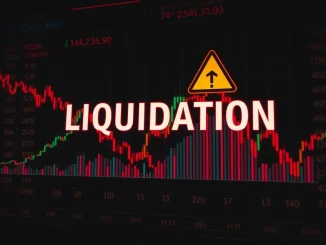
Understanding market sentiment is crucial for anyone involved in crypto trading data. One key indicator traders watch closely is the long-short ratio, especially for derivatives like BTC perpetual futures. This metric provides a snapshot of whether traders are predominantly betting on Bitcoin’s price going up (long) or down (short) on various exchanges. It’s a piece of the puzzle that helps gauge the overall mood in the market.
What Does the Long-Short Ratio Tell Us About Bitcoin Market Sentiment?
The long-short ratio is calculated by dividing the number or volume of long positions by the number or volume of short positions. For futures trading, particularly perpetual futures, this ratio can offer insights into trader positioning and potential directional bias. A ratio above 1 suggests more traders are long than short, indicating a potentially bullish sentiment, while a ratio below 1 suggests the opposite.
Here’s a look at the long short ratio for BTC perpetual futures across three major exchanges based on open interest over the past 24 hours:
- Total Aggregate: Long 50.24%, Short 49.76%
- Binance: Long 50.26%, Short 49.74%
- OKX: Long 50.57%, Short 49.43%
- Bybit: Long 50.05%, Short 49.95%
As you can see, the aggregate data shows a very slight lean towards long positions. Individually, OKX shows the strongest bias towards longs among these three, while Bybit is nearly balanced.
Using BTC Perpetual Futures Data in Your Strategy
This specific BTC perpetual futures data suggests a market that is relatively balanced, with a marginal edge for bullish sentiment according to these metrics. However, it’s important not to rely solely on this one indicator. While a strong imbalance can sometimes signal potential reversals (e.g., an overwhelming number of longs might suggest a short squeeze is less likely or that there’s significant fuel for a downturn if sentiment shifts), a near 50/50 split often indicates indecision or a market consolidating.
Challenges and Considerations
interpreting the long short ratio isn’t without its challenges:
- Data Source Variability: Ratios can differ based on whether they measure the number of accounts, the volume of positions, or open interest.
- Rapid Shifts: Sentiment can change quickly, making 24-hour data a snapshot rather than a continuous view.
- Whale Activity: Large individual trades can skew the ratio significantly without reflecting broad market sentiment.
- Not Predictive Alone: This data is best used in conjunction with other technical and fundamental analysis tools.
For traders looking at crypto trading data, this ratio serves as a valuable sentiment check. If your analysis suggests a potential upward move for Bitcoin, a slightly positive long-short ratio might offer minor confirmation. Conversely, if you’re bearish, this ratio doesn’t present a strong counter-signal, suggesting the market isn’t heavily positioned against a downturn based purely on this metric.
Concluding Thoughts on Bitcoin Market Sentiment
The latest BTC perpetual futures long-short ratios indicate a nearly neutral market sentiment, with a very slight bias towards long positions across major exchanges. While this futures trading data point is insightful, remember it’s just one piece of the complex Bitcoin market sentiment puzzle. Successful trading strategies incorporate a variety of indicators and analysis methods to navigate the dynamic world of cryptocurrencies.



